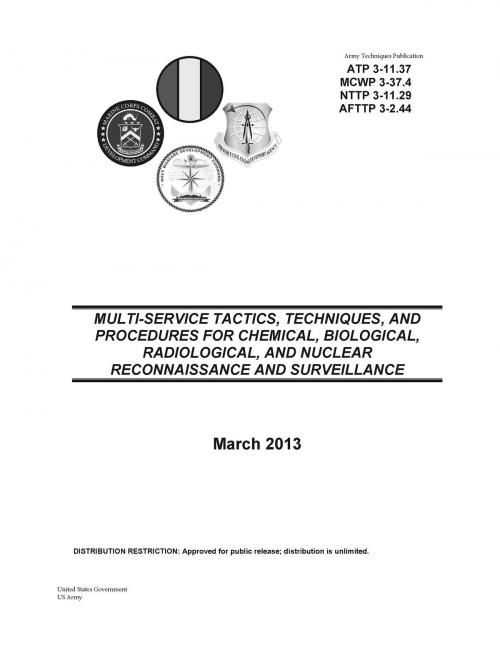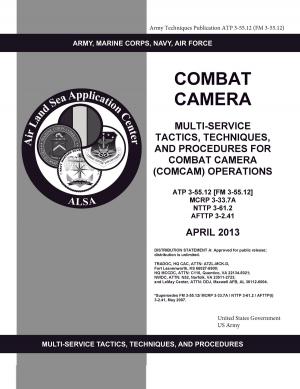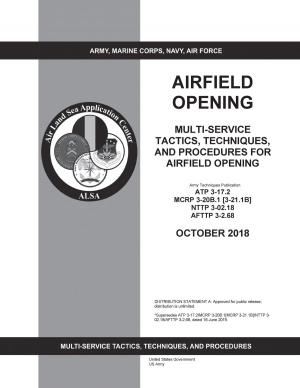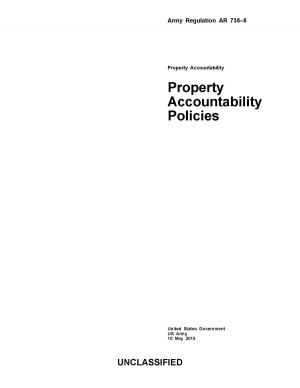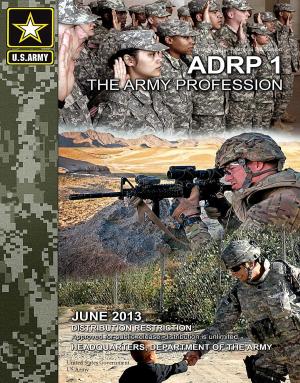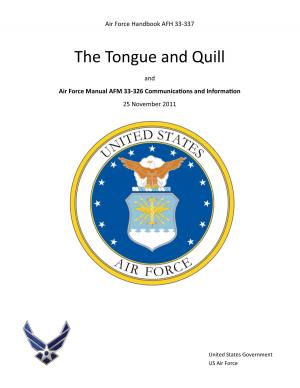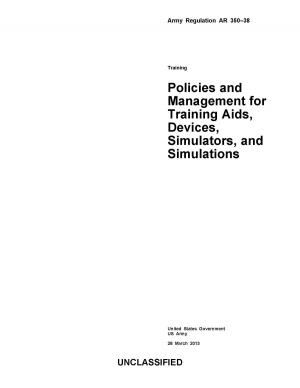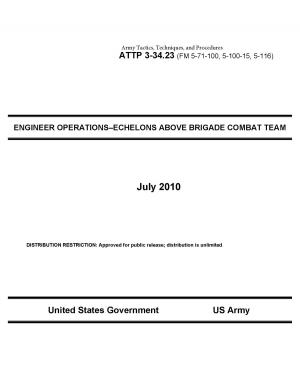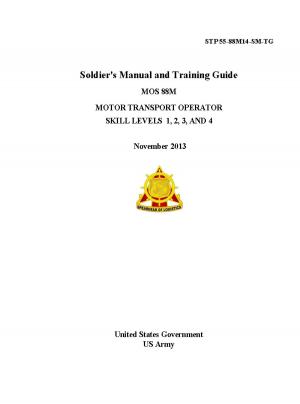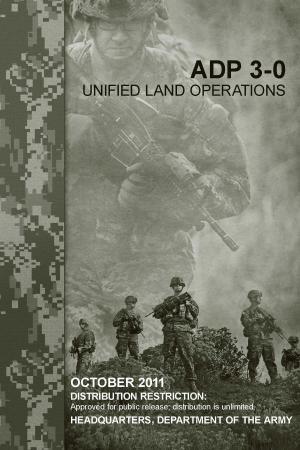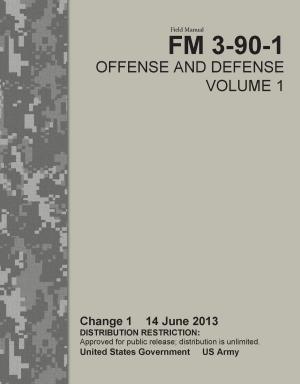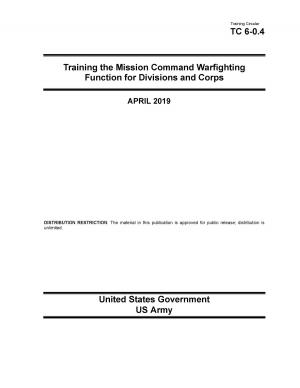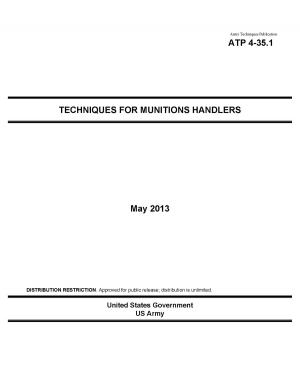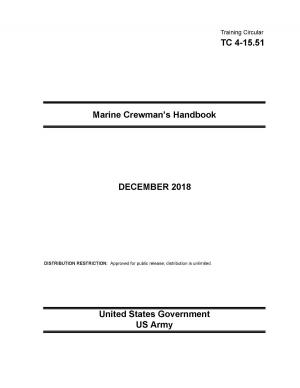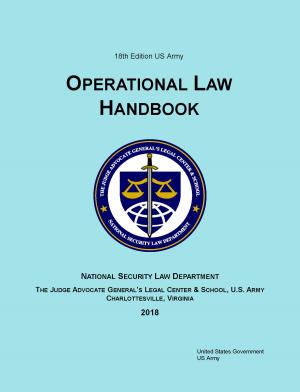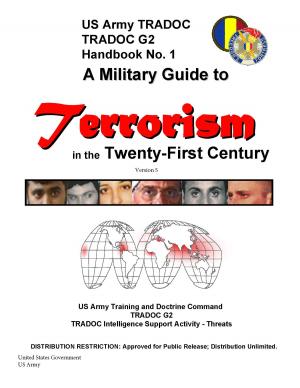Army Techniques Publication ATP 3-11.37 MCWP 3-37.4 NTTP 3-11.29 AFTTP 3-2.44 Multi-Service Tactics, Techniques, and Procedures for Chemical, Biological, Radiological, and Nuclear Reconnaissance and Surveillance March 2013
Nonfiction, Reference & Language, Study Aids, Graduate & Professional, Armed Forces, Science & Nature, Technology, Military Science, Reference, Guides & Handbooks| Author: | United States Government US Army | ISBN: | 1230000119751 |
| Publisher: | eBook Publishing Team | Publication: | April 6, 2013 |
| Imprint: | Language: | English |
| Author: | United States Government US Army |
| ISBN: | 1230000119751 |
| Publisher: | eBook Publishing Team |
| Publication: | April 6, 2013 |
| Imprint: | |
| Language: | English |
This manual revises and combines Multiservice Tactics, Techniques, and Procedures for Nuclear, Biological, and Chemical Reconnaissance and the now rescinded MTTP for Biological Surveillance manuals by incorporating shifting and emerging guidance, lessons learned, concepts and technologies to address doctrinal gaps identified in the CBRN Passive Defense Capabilities Based Assessment and from Service feedback. Accordingly, this publication is renamed: Multi-Service Tactics, Techniques, and Procedures for Chemical,Biological, Radiological, and Nuclear Reconnaissance and Surveillance. Its primary purpose is to provide a standardized reference for use by all Services while conducting CBRN R&S operations. This publication contains several key modifications that were required to update and coalesce existing R&S doctrine. It is ultimately designed to provide commanders with detailed, timely, and accurate CBRN intelligence to gain situational understanding of CBRN threats and hazards.
Using a “plan, prepare, and execute” construct, this publication seeks to organize those activities necessary to ensure effective resource management and synchronize the efforts of staffs and leaders. In particular, execution activities are organized into a structural hierarchy that seeks to illustrate the elements of CBRN R&S. These elements are forms, modes, methods, tasks, and techniques. CBRN reconnaissance operations are partitioned into three possible forms (route, zone, and area), as are CBRN surveillance operations (area, point, and medical). There are three modes common to CBRN reconnaissance and surveillance (mounted, dismounted, and aerial), while there are four methods (standoff, remote, direct, and indirect). There are five common CBRN R&S tasks (detect, identify, quantify, collect samples, and report). CBRN reconnaissance-unique tasks (locate, survey, and mark) are supported by thirteen specific techniques, and CBRN surveillance-unique tasks (observe and monitor) have four embedded techniques. This structure is intended to provide a systematic means of promoting the production of usable information that supports the commander’s critical information requirements (CCIR) relative to CBRN threats and hazards. The selection of the appropriate CBRN R&S element to satisfy information requirements is accomplished after methodically allowing for the mission, enemy, terrain and weather, troops and support available, time available, and civil considerations (METT-TC).
Another significant change in this manual is the migration to the new Department of Defense (DOD) four-tier system for determining the identity of CBRN hazards. The identification levels are: presumptive, field confirmatory, theater validation, and definitive. This publication becomes the proponent for doctrinal definitions of these four identification levels. It must be noted that forward-deployed U.S. Navy medical assets possess the ability to conduct field confirmatory and theater validation level analyses and, as such, have opted to continue to operate in the legacy three-tiered system. These identification levels support applied military decisionmaking at the tactical, operational, and strategic levels.
Finally, this publication introduces the sample management process and notes the vital role played by precise sample collection techniques in eventually providing commanders with the analyzed data necessary to make informed CBRN protection, prophylaxis, and medical treatment decisions. While environmental samples and clinical specimens are included in the sample management process, clinical specimens are only collected by specially trained personnel. Clinical specimens will not be discussed in this manual, and the reader should refer to Multiservice Tactics, Techniques, and Procedures for Health Service Support in a CBRN environment for more information on clinical specimen collection.
This manual revises and combines Multiservice Tactics, Techniques, and Procedures for Nuclear, Biological, and Chemical Reconnaissance and the now rescinded MTTP for Biological Surveillance manuals by incorporating shifting and emerging guidance, lessons learned, concepts and technologies to address doctrinal gaps identified in the CBRN Passive Defense Capabilities Based Assessment and from Service feedback. Accordingly, this publication is renamed: Multi-Service Tactics, Techniques, and Procedures for Chemical,Biological, Radiological, and Nuclear Reconnaissance and Surveillance. Its primary purpose is to provide a standardized reference for use by all Services while conducting CBRN R&S operations. This publication contains several key modifications that were required to update and coalesce existing R&S doctrine. It is ultimately designed to provide commanders with detailed, timely, and accurate CBRN intelligence to gain situational understanding of CBRN threats and hazards.
Using a “plan, prepare, and execute” construct, this publication seeks to organize those activities necessary to ensure effective resource management and synchronize the efforts of staffs and leaders. In particular, execution activities are organized into a structural hierarchy that seeks to illustrate the elements of CBRN R&S. These elements are forms, modes, methods, tasks, and techniques. CBRN reconnaissance operations are partitioned into three possible forms (route, zone, and area), as are CBRN surveillance operations (area, point, and medical). There are three modes common to CBRN reconnaissance and surveillance (mounted, dismounted, and aerial), while there are four methods (standoff, remote, direct, and indirect). There are five common CBRN R&S tasks (detect, identify, quantify, collect samples, and report). CBRN reconnaissance-unique tasks (locate, survey, and mark) are supported by thirteen specific techniques, and CBRN surveillance-unique tasks (observe and monitor) have four embedded techniques. This structure is intended to provide a systematic means of promoting the production of usable information that supports the commander’s critical information requirements (CCIR) relative to CBRN threats and hazards. The selection of the appropriate CBRN R&S element to satisfy information requirements is accomplished after methodically allowing for the mission, enemy, terrain and weather, troops and support available, time available, and civil considerations (METT-TC).
Another significant change in this manual is the migration to the new Department of Defense (DOD) four-tier system for determining the identity of CBRN hazards. The identification levels are: presumptive, field confirmatory, theater validation, and definitive. This publication becomes the proponent for doctrinal definitions of these four identification levels. It must be noted that forward-deployed U.S. Navy medical assets possess the ability to conduct field confirmatory and theater validation level analyses and, as such, have opted to continue to operate in the legacy three-tiered system. These identification levels support applied military decisionmaking at the tactical, operational, and strategic levels.
Finally, this publication introduces the sample management process and notes the vital role played by precise sample collection techniques in eventually providing commanders with the analyzed data necessary to make informed CBRN protection, prophylaxis, and medical treatment decisions. While environmental samples and clinical specimens are included in the sample management process, clinical specimens are only collected by specially trained personnel. Clinical specimens will not be discussed in this manual, and the reader should refer to Multiservice Tactics, Techniques, and Procedures for Health Service Support in a CBRN environment for more information on clinical specimen collection.
